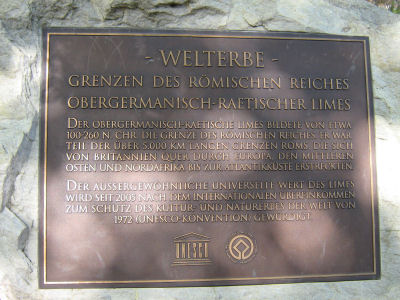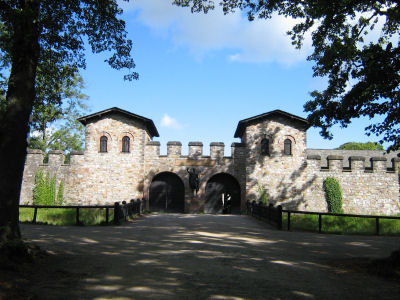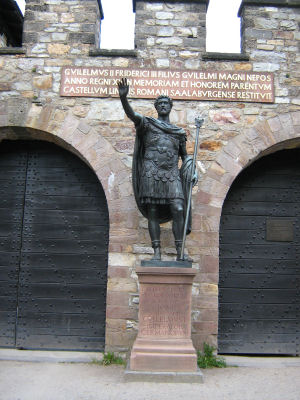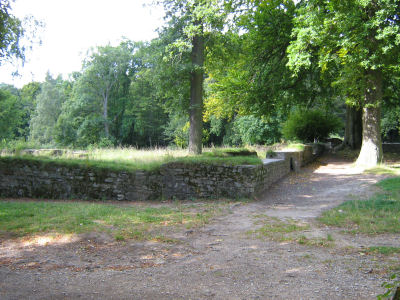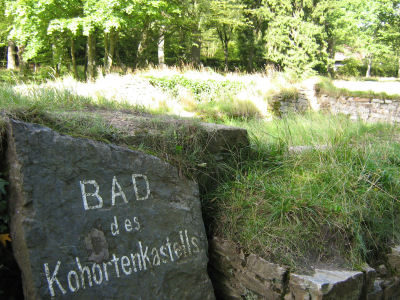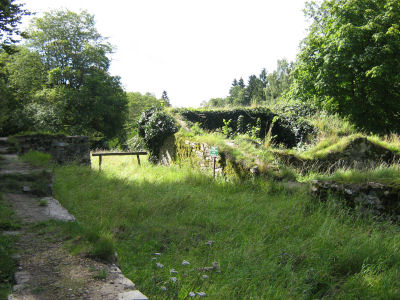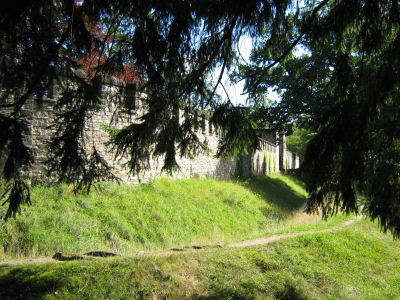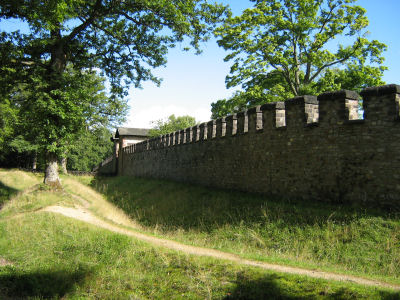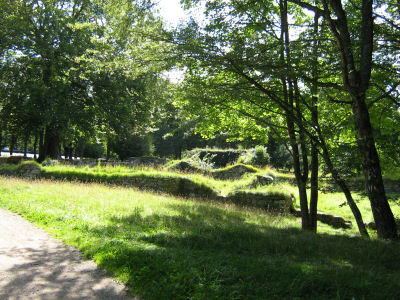Saalburg
|
The outer Upper Germanic-Rhaetian
boundary wall ("Limes") is one of the most outstanding
archaeological monuments in Central Europe and has recently been put
on the world cultural heritage list of the UNESCO. Many of the
installations associated with the wall were unearthed as the result
of excavations recently carried out by the different Regional
Offices for the Protection of Ancient Monuments and have been
conserved because of their excellent state of preservation. They
include forts, baths and towers together with parts of the
fortifications themselves such as ramparts, ditches, walls and
palisades. Also taken into consideration are museum-like facilities
such as protective structures covering Roman ruins which are
explained by plans, photographs and finds as well as archaeological
parks located in the neighbourhood of boundary wall structures with
reconstructed or restored exhibitions. Many of these areas are
called "archaeological reserves" and comprise archaeological
monuments which, still largely intact, have been purchased by
arrangement with the town or community in question usually with
financial assistance from the regional government or from
antiquarian societies and converted from their existing or planned
purpose and put to new use. Thus the archaeological material has
been preserved and will be at the disposal of future generations for
updated, improved methods of research. Finally, attention is drawn
to the regional and local museums where archaeological discoveries
from the "Limes" have been
The German "Limes" Road runs close to
the Upper Germanic-Rhaetian "Limes" from the Rhine to the Danube.
Most of the forts were founded at the beginning or middle of the 2nd
century and existed until the end of the Roman occupation 260/270
A.D.. The "Limes" runs from Rhein-brohl to Regensburg, covering a
distance of over 500 km. It has long been a traditional site of
archaeological excavation work and 1892 saw the establishment of the
Imperial "Limes" Commission with a view to investigating all aspects
of the wall as a whole and in uniform fashion. For this purpose the
distance from the Rhine to the Danube via Eining was divided into 15
sections. Sections 10 and 11 cover the older stretch called
"Odenwaldlimes" and are not taken into consider-ation here. The
different watch towers (T) along the "Limes" and the forts were
given numbers by the Imperial >Limes< Commission. |
|
|
|
|
|
|
|
|
|
|
|
|
|
|
|
|
